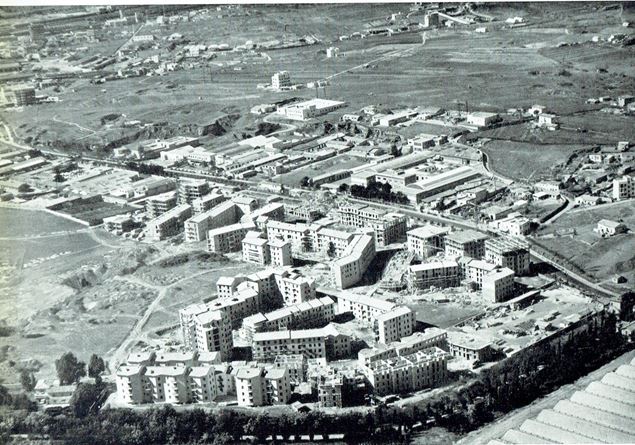Amintore Fanfani (1908-1999).
At the Rimini Meeting Premier Giorgia Meloni and the Minister of Infrastructure Matteo Salvini announced a new home plan. An ambitious plan, especially if it is compared to the home plan par excellence which transformed the Italy of the reconstruction and to which the two are probably inspired. Waiting to know if it is a prosopopea or a realistic project, it will not hurt to know the comparison stone of all the home plan, on which Meloni and Salvini will necessarily be measured and on which all the previous governments have been measured (with often disastrous results, or remained on paper).
And here is the story. In the heart of the post -war period, in fact, when Italy tried to get up from the rubble, Amintore Fanfani (1908-1999), Minister of Labor, imagined an ambitious response to the housing emergency and unemployment: the so -called “Ina -Casa Plan”, sometimes also known as Piano Fanfani. It was more than a building plan: it was a public speech on living and work, a challenge that combined efficiency, quality, solidarity and development by an Italy that was preparing to live the economic boom. Thanks to this project, thousands of families found a real house, thousands of workers lost the despair of Vivere in real hovels (like the Sassi di Matera, today patrimatinum of UNESCO but then real caves, or the huts of the Polesine), and our country laid the foundations for a concrete modernity.
The origins and the purposes
The legislative process started in July 1948, with the presentation of the project to the Council of Ministers; The law was approved on February 28, 1949 (law n. 43), with the title “Measures to increase worker employment, facilitating the construction of workers’ houses”. In that phase, Keynesian theories mixed with a strong spirit of Christian solidarity, dear to Fanfani since its 1942 volume Interviews on the poorwhere he denounced in particular the degradation of homes between the causes of poverty.

Gino Pollini.
The financial and organizational mechanism
The plan was financed in a “innovative” way: a joint collection between the state, employers and workers, with a retained in the paycheck – “the equivalent of a cigarette per day”, as stated the propaganda of the time – in support of the most needy workers
The funds were entrusted to the National Insurance Institute (INA), which established the “Ina -CASA management” section dedicated to the project
Extension, numbers and impact
Originally scheduled for seven years, the plan was extended until 1963 thanks to the law of 26 November 1955 (n. 1148). In these fourteen years, the project cleared a massive experience: according to authoritative sources, over 20,000 construction sites opened during the execution of the plan, using approximately approximately 40,000 workersequal to a significant impact on employment
Other studies speak of 355,000 housing made on a national scale and the coverage of the 10 % of the operating days of the time
Architecture, urban planning and quality
The “Fanfani Piano” was not a simple welfare phenomenon: architects of the caliber of Adalberto Libera, Figini and Pollini, Giò Ponti, Ridolfi, Albini, BPR, and others, set out at work on quality projects. It was an experience of architectural neorealismrespectful of traditions but projected into the future, attentive to the materials, the composition and the human dimension of living
An effective example of this approach is the ina -house neighborhood of VIA Harar -Dessiè in Milan: conceived by Figini, Pollini (father of the pianist Maurizio), Gio Ponti and Gigi Gho ‘, with the famous “horizontal towers” and “insulae” balanced by green spaces, equipped with space and urban qualities not obvious by the standards of the time
Criticism and continuity: Law 167/1962
When the ina -CASA construction sites ended, the public residential policy evolves evolves. In 1962, the IV Government Fanfani – with the Minister of Public Works Florentine on the – ran the law of 18 April 1962 n. 167, which introduced i Area plans (Peep)urban planning tools within the municipal regulatory plan to combat speculation and plan settlements with services, areas and adequate quality standards
The new tool also allowed the expropriation at a calm price and generated a rotation financing mechanism: the Municipalities and the Bodies could acquire low -cost areas, urbanize them and resell them to reinvest elsewhere
The Harar district in Milan, near the San Siro stadium.
Legacy and memory
The neighborhoods born with the plan – often in the suburbs, but self -sufficient and equipped with services – today are an integral part of our cities and retain their own urban identity. They represent a testimony of how the past, when he has been able to look beyond today, can generate lasting and dignified results


